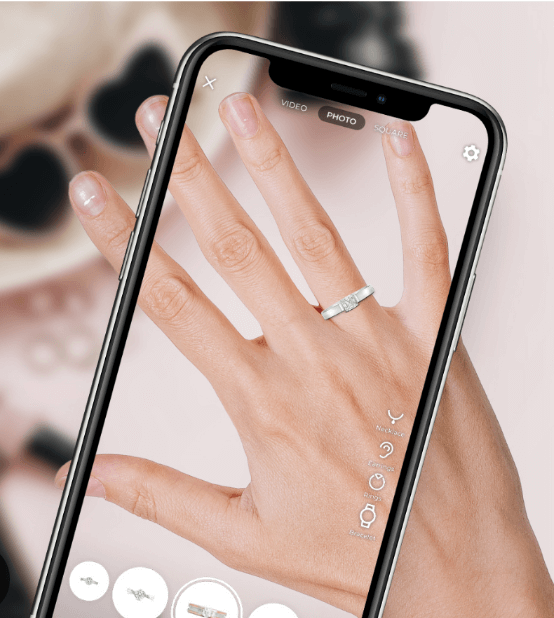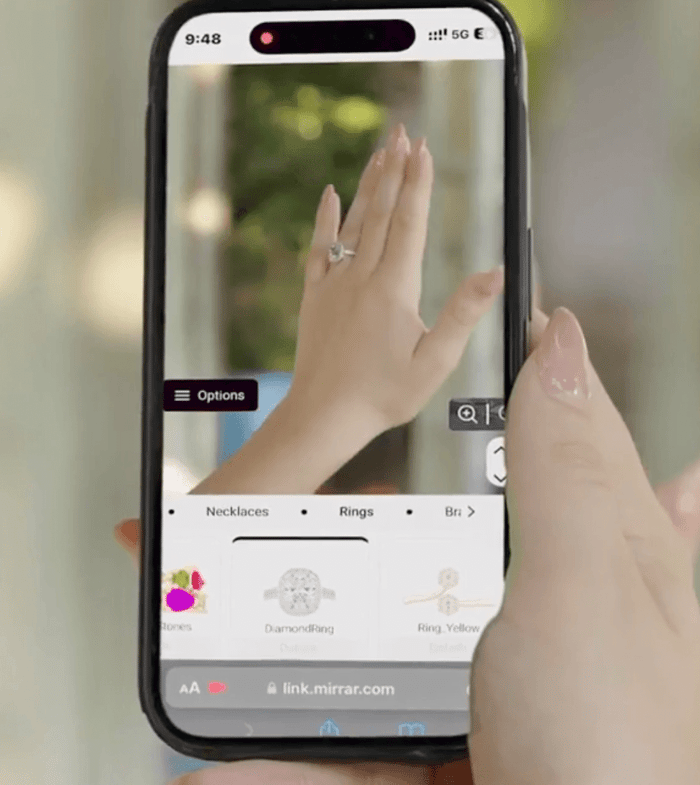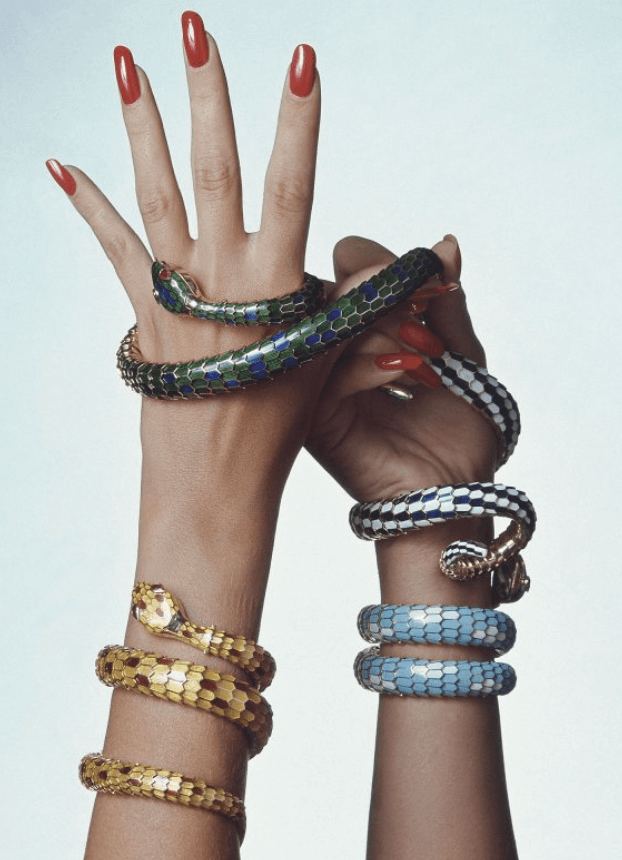Virtual Jewelry Try-On: How AR Technology is Changing the Way We Shop for Jewelry
Table of Contents
Shopping for jewelry has always been a personal and emotional experience. Whether selecting a piece for oneself or choosing a gift for a loved one, people want to feel confident in their decision, but the way people are shopping is changing. As more customers move to digital platforms, the jewelry industry is adapting with innovative solutions, one of the most exciting being the rise of virtual jewelry try-on.
Virtual jewelry try-on tools use augmented reality technology to simulate how rings, necklaces, earrings, or bracelets would look when worn. This technology is reshaping how customers experience luxury and style online, providing both convenience and confidence.
By simply using a smartphone or computer camera, users can see a realistic rendering of a jewelry piece on their own body.

This is a digital solution that allows shoppers to preview jewelry pieces on themselves using a live camera feed or a photo through advanced facial and hand recognition technology. The system detects the user’s features and places the selected piece in the correct position, reflecting movement, lighting, and perspective in real time. This creates an interactive and personalized shopping experience that mimics the act of trying on jewelry in the store, without the need for physical presence.
Why Virtual Jewelry Try-On Matters
As e-commerce becomes increasingly dominant in the jewelry sector, the lack of a physical try-on experience has been a key challenge. Customers are often hesitant to purchase expensive or meaningful pieces without seeing how they look when worn because sizing, style, and proportion are important considerations that are difficult to value from static product photos.
This virtual try-on technology addresses this gap by bringing the store experience online. Shoppers can experiment with different styles, colors, and materials in real time, switch between items easily and share the results with friends or family for feedback which not only improves decision-making but also enhances engagement and trust in the brand.
How It Works
Most virtual jewelry try-on tools operate through a website or app and the process typically involves:
Accessing the camera on a device.
Selecting a jewelry item to preview.
Allowing the software to detect relevant body features (like ears or hands).
Viewing the selected item applied to the live image or uploaded photo.
Some tools also offer customization features, such as adjusting ring sizes or trying different gemstone colors. The more advanced platforms may use 3D rendering to add depth and realism, making the jewelry appear almost indistinguishable from real life.

The main benefit of virtual jewelry try on is the confidence it gives to customers. It answers key questions like "Will this ring fit my finger properly?", "Does this necklace suit my neckline?" or "Are these earrings too large or too small for my face?" This tool also allows to compare different options side by side, sharing the images easily to ask for opinions and experiment with styles you might not try in the physical store, all of this from anywhere and anytime. These advantages lead to higher customer satisfaction and lower return rates, especially in an industry where visual appeal is everything.
Virtual try-on also contributes to sustainability by minimizing the need for shipping physical samples and reducing return rates. It also supports a more responsible production process, where demand can be tested digitally before committing to full manufacturing. This aligns with the values of modern consumers, many of whom seek out brands that prioritize ethics, innovation, and environmental care.
Impact on Jewelry Brands and Retailers
For jewelry brands and retailers, virtual jewelry try-on tools are a game-changer. They not only enhance the customer experience but also increase conversion rates. Shoppers who use virtual try-on features are more likely to complete a purchase, and they tend to buy with greater confidence. Retailers also benefit from valuable data insights because they can adjust inventory, refine marketing strategies, and understand customer preferences by analyzing which items are most frequently tried on brands. This data-driven approach helps businesses stay agile and customer-focused.

Examples of Virtual Jewelry Try-On Tools
Several companies are leading the way in this space:
Perfect Corp.: Known for its beauty tech, Perfect Corp. has extended its AR technology to jewelry try-ons with impressive realism.
Trillion: Offers plug-and-play solutions for jewelers to integrate try-on technology into their websites.
MirrAR: Provides AR-powered jewelry shopping experiences for both online and in-store environments.
Modelia: Although primarily focused on fashion, Modelia’s visualization tools are being adapted to support accessories like jewelry, offering elegant, realistic presentations that enhance digital showcases.
Try Modelia and see how your favorite garments fit! These platforms highlight the growing role of virtual try-on technology in shaping the modern jewelry shopping experience.
Enhancing the Luxury Experience
Luxury is about more than price, it is about feeling special and virtual try-on experiences can elevate the sense of exclusivity and personalization that defines luxury shopping. Brands can use this technology to offer tailored recommendations, virtual consultations, and curated digital experiences that go beyond the transaction.
By making shoppers feel seen and understood, AR jewelry try-on tools help build lasting emotional connections and strengthen brand loyalty.

Contrary to what it may seem, augmented reality can increase the value of the luxury experience if the right tools are used.
The Future of Jewelry Shopping
As technology continues to evolve, virtual try-on features will become more sophisticated. Future innovations may include:
Voice-controlled try-on sessions.
AI-guided style suggestions.
Integration with social media platforms for instant sharing.
Augmented reality showrooms and holographic displays.
These developments will further blur the line between physical and digital, creating a seamless and enriched shopping journey.
A New Standard in Jewelry Retail
Virtual jewelry try-on is not just a trend, it is the future of how we experience and purchase fine jewelry. By combining technology with emotion, it offers a powerful tool for connection, personalization, and discovery.
For customers, it brings clarity and confidence. For brands, it offers insight and innovation. And for the industry as a whole, it marks a significant step toward a more interactive, inclusive, and intelligent retail model. As more people embrace this technology, virtual jewelry try-on will continue to shape the way we celebrate beauty, meaning, and style in the digital age.
If you want to be aware of the latest news in fashion technology, subscribe now to our newsletter and don't miss a thing.
How would you rate this article:
Related Articles
- Fashion Design with AI: All You Need to Know
- How to Use AI in Ecommerce: Boost Your Sales and Optimize Customer Experience
- 10 Best Artificial Intelligence Marketing Software for Small business
- 5 AI Tools for Image Enhancement to Achieve Professional-Quality Results
- AI Agent for Fashion: Smarter Business & Design Tools
- How to Dress for a Job Interview: Professional Outfits That Make an Impact
- Fashion trends for 2026
- Virtual Fitting Rooms: How Technology is Revolutionizing Online Shopping and Fashion
- Modelia vs Fashn.ai
- The Ultimate User Guide to Virtual Try-On Features: How to Get the Best Experience


